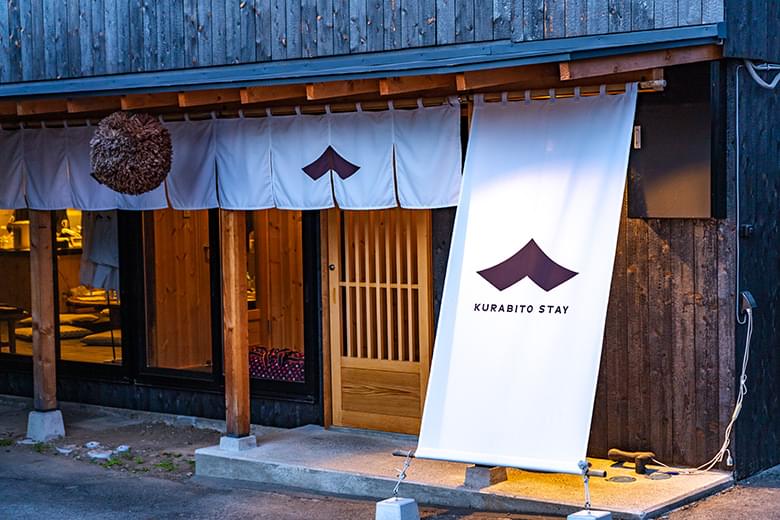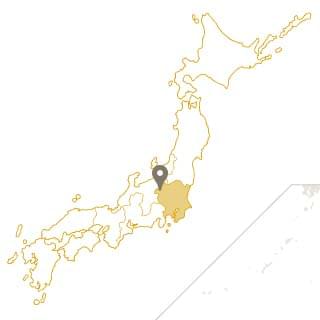Nagano Prefecture’s Saku City is a tranquil place, spreading out over the flatlands between Mount Asama and the Yatsugatake Mountains. Its economy is predominantly agricultural, with rice cultivation having been practiced since the early 1600s, during Japan’s Edo period. Countless paddies can be seen on the fertile ground along both sides of the Chikuma River, which bisects the city.
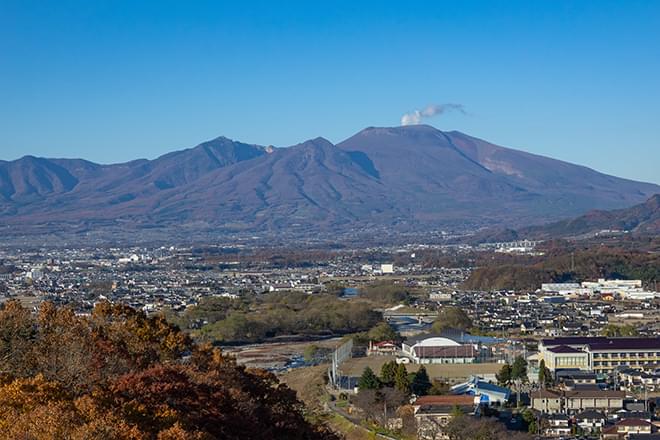
Excellent rice production and abundant sources of water gave rise to the development of sake brewing in the Edo period. Today, Saku is home to some thirteen sake breweries, an incredible number considering that Nagano, with its large geographical area, has only eighty in total. All of these breweries are over a hundred years old, and some, such as the Kitsukura Sake Brewery, trace their roots to the 1600s, making Saku an ideal place to delve into the world of Japanese sake brewing.
Experience the life of a sake brewer
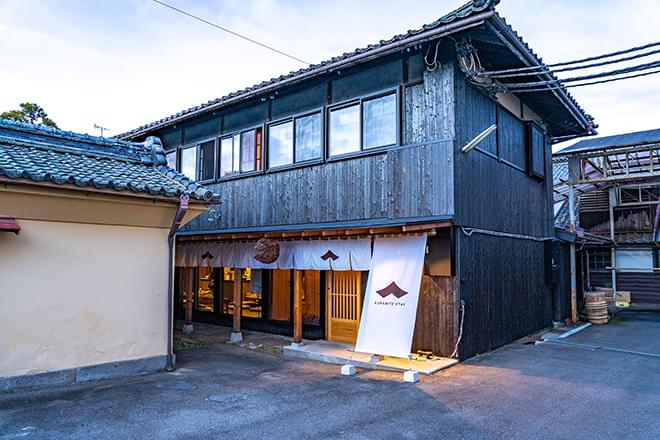
Sake breweries all across Japan offer tours and are eager to help visitors understand how sake is made. Yet a new company called Kurabito Stay has gone one step further by providing the opportunity to actually participate in the sake-brewing process with a two-night, three-day stay.

Working in partnership with Kitsukura Sake Brewery, which officially dates back to 1696 (but is probably far older), Kurabito Stay renovated a hundred-year-old building on the brewery premises—it actually happens to be the “newest” building on the site. Appropriately enough, this facility, where guests sleep and take breakfast, was used by toji (master brewers) and kurabito (brewery workers) as recently as twenty years ago.

The building retains its historic structure, though double-paned windows and modern comforts, such as heating and air conditioning as well as showers and bathrooms, were added in the renovation. On the ground floor, an old wooden lid from a sake tank has been repurposed as a large communal table. Upstairs, the wide space where the brewery workers once bedded down has been remodeled, and split into a number of roughly 4, and 7 square meters-sized individual rooms with tatami mats and soft futons – a comfy space, perfect for relaxing in after a day in the brewery.
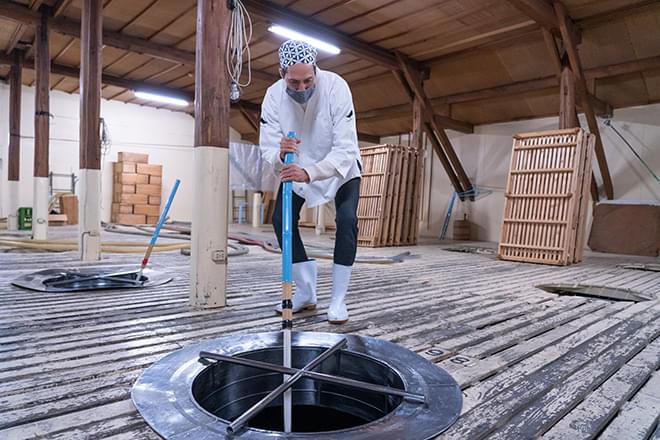
Kurabito Stay began operations in March of 2020 and has already hosted some 150 guests from both Japan and abroad to participate in brewing sake. Guests’ participation in the sake-making experience process depends on the season and the timing of their stay, but it can include activities like steaming the rice, mixing the starter, or sprinkling the koji mold onto the warm rice. There is always ample time to ask questions of the Kitsukura Sake Brewery staff, who also lead sake-tasting sessions and sake-related seminars during breaks and meals.
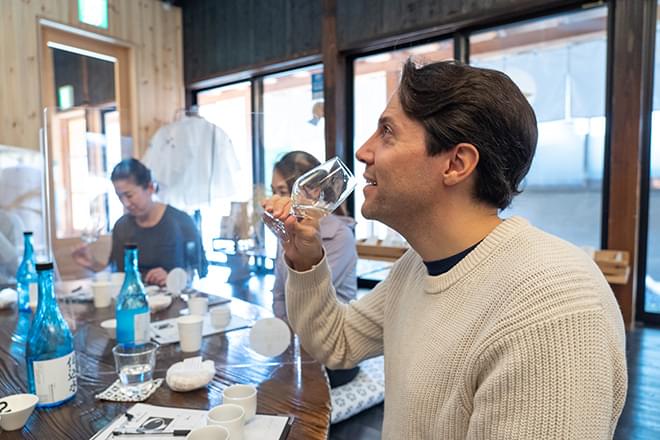
Best of all, you’ll eventually get the chance to taste the sake you have helped to make. Since most visitors will not be present when the final product is ready, Kurabito Stay sends them a bottle of the sake at a later time (international delivery is currently unavailable). After experiencing this unique program—and tasting your creation too!—you’ll see sake in a whole new light.
- Name:
- Kurabito Stay
- Address:
- 623-2 Usuda, Saku, Nagano
- Availability:
- Year-round experience programs (except during certain busy periods)
An Edo-period innovation that transformed Saku

Situated on a small hill next to a Shinto shrine, the premises of the Gorobei Memorial Hall resemble a peaceful park, providing excellent views of the town and its rice paddies. One would never know that centuries ago this land looked vastly different.
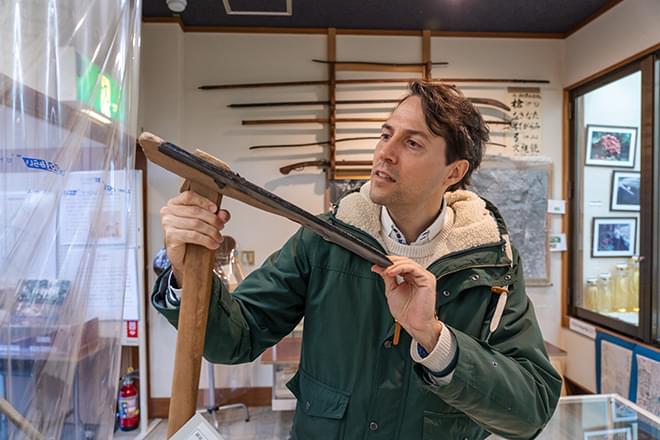
In the mid-1500s—known as the Warring States period in Japanese history—Saku was devastated by war between rival clans. By the early 1600s, the townspeople were suffering from domestic turmoil, social instability, hunger, and poverty. Also, agricultural development was constrained by limited access to water.
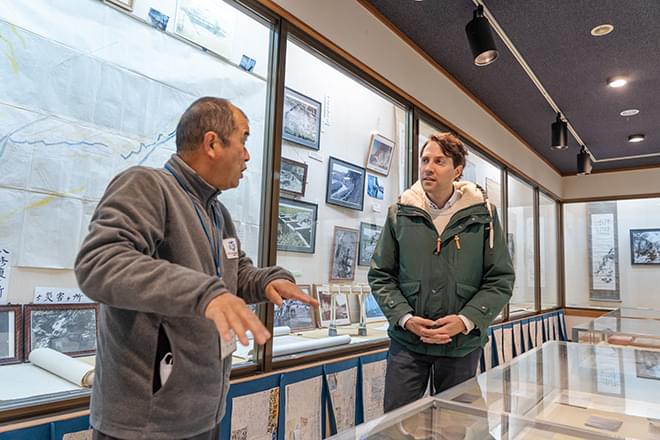
Realizing that major improvements were critically necessary, the lord of the land, Ichikawa Gorobei, decided to construct an irrigation canal. By 1626, a twenty-kilometer-long canal had been completed—a significant achievement even in the modern era, but all the more so in the early Edo period with its limited technology. Sourcing the water from the surrounding mountains, Gorobei’s workers faced an elevation difference of 1,200 meters, which required the construction of high embankments as well as countermeasures to prevent soft soil from collapsing. Tunnels were dug by hand and without the use of sophisticated surveying instruments.
Despite encountering numerous obstacles, Gorobei was ultimately successful, paving the way for some forty additional small irrigation canals to be built. After the completion of the canals in 1631, farmers were able to construct rice paddies covering 870 hectares, which turned Saku into a thriving agricultural zone. The Gorobei Memorial Hall features illustrative maps, photos, and even models of these irrigation canals, as well as displays of authentic agricultural tools from the Edo period, all of which give visitors a clear understanding of the incredible effort involved in this undertaking.
- Name:
- Gorobei Memorial Hall
- Address:
- 14-1 Ko, Saku, Nagano
- Tel:
- 0267-58-3118
- Email:
- gorobei@city.saku.nagano.jp
- Availability:
- Closed on Mondays (but open on holidays), the day after national holidays, and New Year's holidays (December 29–January 3)
Enjoy local sake paired with local ingredients
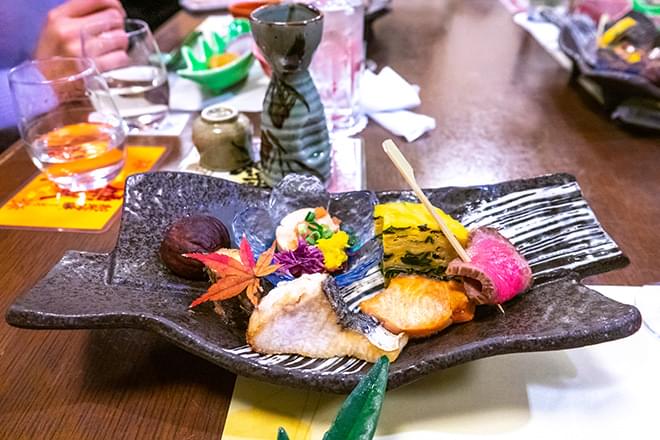
Since Kurabito Stay does not serve lunch or dinner at their facility, participants are encouraged to take these meals at restaurants nearby. Just a short walk up the road from the brewery is Oryori Lemon, a three-story Japanese restaurant in the heart of the Usuda district. Kurabito Stay has partnered with this restaurant to showcase cuisine that pairs well with the local sake.

From the outside, Oryori Lemon looks like other businesses in the neighborhood, but on the inside, a surprise awaits. The owner and head chef, a former classmate of the current head of Kitsukura Sake Brewery, trained at Japanese ryotei (high-end traditional Japanese restaurants) in Tokyo’s Ginza and Roppongi districts as well as in Nagano. His culinary approach has been well received, and he was awarded the Minister of Agriculture, Forestry and Fisheries Prize in the local-cuisine category, an award that is as prestigious in Japan as a Michelin star.
Here, you’ll find plenty of local ingredients, including rice from Saku, carp from the Chikuma River, and Nagano’s Shinshu salmon and Shinshu pork. Oryori Lemon also takes pride in their charcoal-grilled fish and meat dishes. Dishes are predominantly Japanese, but the menu also includes Western-style food modified with Japanese ingredients, such as Italian bagna cauda (a garlic-and-anchovy dip) made with shiokara (a paste from salted fermented seafood).
This is just one of the many excellent local restaurants close to Kurabito Stay. Get a taste for the range of food experiences available in Saku via the link below:
https://sakusake-tourism.com/cuisine/
- Name:
- Oryori Lemon
- Address:
- 2179-5 Usuda, Saku, Nagano
- Tel:
- 0267-82-2325
- Availability
- 11:30–14:00 and 17:00–22:00 (last order is 21:30); closed Sundays
Stroll the tranquil grounds of Shinkaisansha Shrine
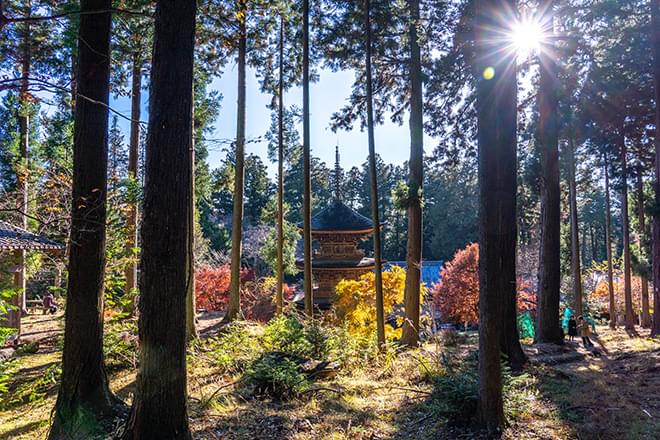
On the opposite side of the Chikuma River from the brewery and nestled against a small, forested mountain lies the dignified Shinkaisansha Shrine, steeped in history. Its origins go back nearly one thousand years, though the oldest structures now standing were built in the 1500s, and signs point out that feudal lords Takeda Shingen and Tokugawa Ieyasu paid visits to the shrine in the sixteenth and seventeenth centuries, respectively. More recently, the shrine gained notoriety as the inspiration for a scene in the popular 2016 animated film Your Name.
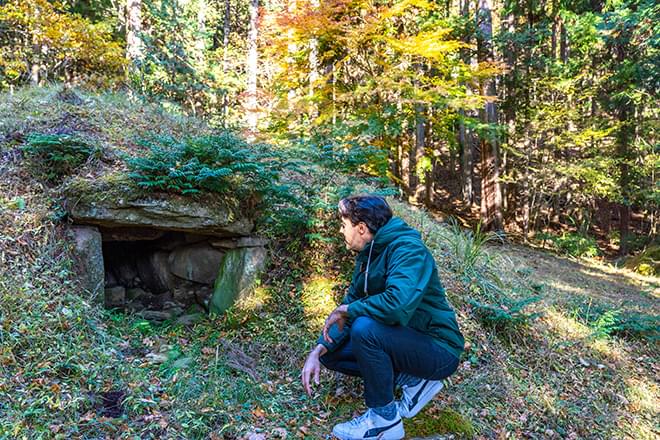
The deities enshrined here are credited with overseeing the plains along the Chikuma River and agriculture in Saku. One such Shinto deity named Takeminakata-no-Mikoto, who is also enshrined in other places across Japan, presides over wind, water, agriculture, and hunting. Japanese express their gratitude for clean water and good rice yields by offering sake to this deity. Here, sake barrels donated by Saku’s breweries can be seen along an entrance to the shrine grounds.
A three-storied Buddhist pagoda dating back to 1515 stands on the shrine’s grounds and is a designated Important Cultural Property that escaped destruction when Buddhism and Shintoism were officially separated soon after the Meiji Restoration in 1868. Tall cedar trees line the grounds, forming a conduit for the deities to pass between heaven and earth, and also surround a series of old kofun, or ancient tombs, behind the pagoda.
- Name:
- Shinkaisansha Shrine
- Address:
- Miyashiro-2394 Taguchi, Taguchi, Saku, Nagano
- Tel:
- 0267-82-9651
- Availability:
- Open year-round
